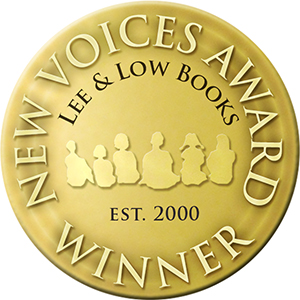 Stacy Whitman is Editorial Director and Publisher of Tu Books, an imprint of LEE & LOW BOOKS that publishes diverse science fiction and fantasy for middle grade and young adult readers. Parts of this blog post were originally posted at her blog, Stacy Whitman’s Grimoire.
Stacy Whitman is Editorial Director and Publisher of Tu Books, an imprint of LEE & LOW BOOKS that publishes diverse science fiction and fantasy for middle grade and young adult readers. Parts of this blog post were originally posted at her blog, Stacy Whitman’s Grimoire.
Last week, I discussed why worldbuilding in speculative fiction can be so challenging for authors. How do we introduce a completely new world without infodumping or confusing readers? I gave some examples of worldbuilding done well in popular YA science fiction and fantasy: The Hunger Games, Divergent, and Twilight. In all these cases, the starting point is in some way relatable, or there is something about the character (Tris, Katniss) that hooks the reader. First pages should be character- and plot-driven, and worldbuilding should support rather than dominate. That gives these books an easy entry point and wide appeal.
There are three primary approaches to worldbuilding:
Reader learns world alongside character
Readers of Harry Potter, Percy Jackson, and Twilight figure out the world alongside the main character. Information is spooled out as the character learns it, so the reader doesn’t have to absorb everything at once. This is a low bar for entry, not requiring much synthesis of information. The character is almost a stand-in for the reader.
Exposition: questions raised, then answered
What about Hunger Games? Now it gets a little tougher. Suzanne Collins starts out with a perfectly relatable (if a tiny bit cliche) situation, the main character waking up and seeing her family. We get some exposition on Katniss’s family and the cat who hates her.
But it becomes non-cliche by page 2, when we learn about the Reaping. Ah! What’s the Reaping, you ask? We don’t know yet. Now the bar for entry is raised. There is a question, the answer for which you’re going to have to read further to find out. The infodumpage level is low, but there is still some exposition in the next few pages, letting us know that Katniss lives in a place called District 12, nicknamed the Seam, and that her town is enclosed by a fence that is sometimes electrified—and which is supposed to be electrified all the time.
Continue reading →
 This year marks our sixteenth annual New Voices Award, Lee & Low’s writing contest for unpublished writers of color.
This year marks our sixteenth annual New Voices Award, Lee & Low’s writing contest for unpublished writers of color.

 LEE & LOW BOOKS has two writing contests for unpublished authors of color: the
LEE & LOW BOOKS has two writing contests for unpublished authors of color: the  Pamela M. Tuck is the author of
Pamela M. Tuck is the author of 
 Stacy Whitman is Editorial Director and Publisher of
Stacy Whitman is Editorial Director and Publisher of